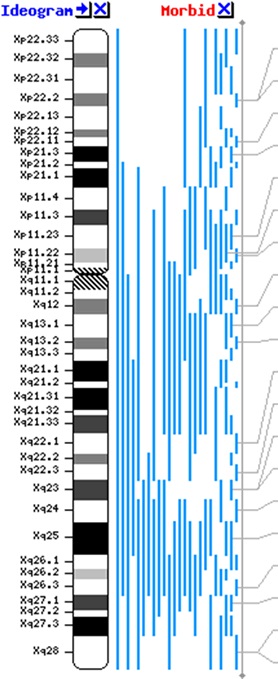
Diseases Linked to X Chromosome
By Dr Ananya Mandal, MD
The X chromosome carries around 2000 genes and makes up about 5% of the total DNA in women and 2.5% in men. Alterations or mutations of these genes leads to disorders that are termed X-linked diseases.
Disorders that arise from additional, missing or structurally altered copies of the X chromosome are termed numerical disorders.
Numerical disorders
Some examples of numerical disorders include:
Klinefelter's syndrome
Klinefelter’s syndrome occurs in males when one or more extra copies of the X chromosome is present. The condition is characterized by abnormal sexual development, with malfunction of the testes and reduced testosterone levels. As males grow up, they tend to be taller than average but have reduced muscle strength. Learning ability may be impaired and there may also be some delayed development of motor skills. Males with the condition may also be infertile.
Triple X syndrome
Also called trisomy X, this condition is caused by the presence of an extra copy of the X chromosome in females, meaning each of her cells has 47 chromosomes. Females with trisomy X are at risk of delayed language, motor-coordination and cognitive processing skills and the average IQ among this groups is 90. Premature ovarian failure is fairly common in women with trisomy X but most have normal fertility.
Turner syndrome
This condition affects females and arises from a missing or abnormally structured X chromosome. Women with the condition are of short stature and infertile. In the majority of cases, women only have one copy of the gene (referred to as monosomy) but in some cases the second X chromosome is present but is abnormally arranged or partially missing.
X-linked disorders
Some examples of X-linked diseases include:
- Aarskog-Scott syndrome
- Allan-Herndon-Dudley syndrome
- Dent disease
- Fetal hemoglobin quantitative trait locus 3
- FG syndrome 5
- Hemophilia B
- Hypophosphatemic rickets
- Jensen syndrome
- Keratosis follicularis spinulosa decalvans
- Lisch epithelial corneal dystrophy
- Lujan-Fryns syndrome
- Megalocornea 1
- Mental retardation-skeletal dysplasia
- Mohr-Tranebjaerg syndrome
- Nephrolithiasis, type I
- Opitz-Kaveggia syndrome
- Spondyloepiphyseal dysplasia tarda
- TARP syndrome
- Thoracoabdominal syndrome

Last Updated: Aug 23, 2018






















.jpg)










No hay comentarios:
Publicar un comentario